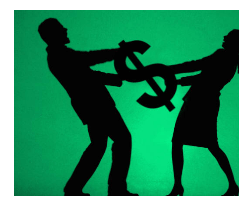It is not rare when the news report another death from a shoplifting incident. Organized crime is a global and national problem affecting millions of people, and the retail industry loses billions of dollars every year due to shoplifting. LP personnel deal with highly strenuous situations every single day they try to apprehend shoplifters, and their safety is not always guaranteed. What are you doing as a retailer to ensure the safety of your employees? Are you doing enough? Is their training subpar, or are you enlisting the best possible training for them to do their job?
To read more, click on the links below.
Employees charged with fatally crushing shoplifting suspect
It was the middle of the night on Feb. 7, at a Florida Walmart Supercenter, when Kenneth E. Wisham, 64, allegedly decided to steal $380.74 worth of DVDs.
Pushing a shopping cart stacked high with them, Wisham tried to leave the store without employees noticing, but when they did — and then confronted him — the man ran, police said, tugging at his falling pants along the way.
At some time Wisham fell, the initial police report said, and three Walmart employees detained him.
Twelve hours later, Wisham was dead.
Reports from police at the time hinted at a medical mystery that had overtaken the 64-year-old man, who stopped breathing while he was being detained. Wisham never regained consciousness, despite lifesaving efforts at Walmart and the hospital, and died later that afternoon.
Two days later, the Polk County Medical Examiner’s Office performed an autopsy.
The cause of death, officials determined, was mechanical asphyxia by restraint, meaning his airwaves were suppressed during a struggle. Wisham also had 15 broken ribs.
INVESTIGATION: Female shoplifting on the rise at some Cleveland-area malls
A string of shoplifting incidents at several local malls have one thing in common — predominantly female suspects.
Strongsville police tell newsnet5.com that women have made up the majority of shoplifting arrests at the South Park Mall for several years. But the number of female arrests is on the rise.
In 2014, 66 percent of shoplifting arrests were female suspects. In 2015, 68 percent of shoplifting arrests were women. And so far this year, 71 percent all shoplifting arrests have been female suspects.
Beachwood had nine reports of shoplifting involving female suspects at Beachwood Place over the last two weeks, according to police reports.
A $5200 Chanel purse was stolen from Saks Fifth Avenue, along with clothing from H&M, jewelry from Claire’s and six different incidents at Sephora, racking up several hundred dollars worth of pocketed cosmetics.
GPS anti-theft device leads deputies to Saks shoplifting suspects
WESLEY CHAPEL, FL (WFLA) – Three woman suspected in a retail theft at the Tampa Premium Outlet Mall are in custody, each facing multiple theft charges.
Pasco County Sheriff’s Office deputies arrested Toccara Huff, Ayanna Palacio and Sharhonda Pedroso Tuesday. Deputies said the women entered Saks Fifth Avenue and ran out with $1,539.78 worth of merchandise. Investigators caught up with the woman 15 minutes later, about 8 miles away.
The arrest was recorded on a deputy’s body camera.
“You’re going to be going to jail for felony retail theft, OK, because the clothes you stole from the store had a GPS tracker on them,” the deputy says.
“I ain’t did nothing,” one of the suspects said.
Deputies used an anti-theft tracking device that was attached to merchandise from Saks Fifth Avenue.
“It was a complete surprise to them,” Sgt. Richard Jones said.
Deputies said this is the first time they’ve caught suspects using a GPS tracker. “Obviously criminals will be more creative in committing crimes, so obviously, law enforcement, loss prevention have to be just as creative in catching those criminals,” Jones said.

 a good example using one of the newer clear, Checkpoint Systems stock labels. The trademarked “lock” and wording has been tested extensively.
a good example using one of the newer clear, Checkpoint Systems stock labels. The trademarked “lock” and wording has been tested extensively.

 How do I approach a shoplifting incident? This question is asked of me almost on a daily basis by store managers and owners. We always give advice and best practices on how to deter a shoplifter by using EAS devices, but what should you actually do if you are faced with a shoplifting incident that you personally witness? When should you call the police? When can you legally detain someone? While not every situation is the same, there are some basic best practices to follow. Here’s what I train my managers and can be a great starting point for you.
How do I approach a shoplifting incident? This question is asked of me almost on a daily basis by store managers and owners. We always give advice and best practices on how to deter a shoplifter by using EAS devices, but what should you actually do if you are faced with a shoplifting incident that you personally witness? When should you call the police? When can you legally detain someone? While not every situation is the same, there are some basic best practices to follow. Here’s what I train my managers and can be a great starting point for you. It’s a normal day at the office. I’m working on a few cases and an email comes across from a manager at one of my stores. There’s not much to it; just says “John” called the store looking for you, here’s his number. Curious to who John is, I immediately give him a call. In my mind I’m thinking it could be a detective, or an Assistant District Attorney maybe.
It’s a normal day at the office. I’m working on a few cases and an email comes across from a manager at one of my stores. There’s not much to it; just says “John” called the store looking for you, here’s his number. Curious to who John is, I immediately give him a call. In my mind I’m thinking it could be a detective, or an Assistant District Attorney maybe.
 The amount of calls reported by Walmart stores to the local police are staggering.
The amount of calls reported by Walmart stores to the local police are staggering. If you’re in retail management, and if you’ve been paying attention, you know your employees are the first line of defense against both internal and external fraud. Employees who are satisfied with their jobs are much more likely to care about co-worker and customer theft. They’re more vigilant and report it more often than those who are unhappy with their jobs.
If you’re in retail management, and if you’ve been paying attention, you know your employees are the first line of defense against both internal and external fraud. Employees who are satisfied with their jobs are much more likely to care about co-worker and customer theft. They’re more vigilant and report it more often than those who are unhappy with their jobs.
 Yep, you probably are! The shoplifter that walked out the door with your $45 item cost you MORE actual money than $45!
Yep, you probably are! The shoplifter that walked out the door with your $45 item cost you MORE actual money than $45! I’m sure you’ve already read how shoplifters cost you money. It’s probably hard to digest the dire financial implications that shoplifters have on all of our businesses. Without adequate controls in place, you are putting your business and your financial well-being at risk, and honestly, you just can’t do that. That’s why we have to have a camera system and why EAS systems are a necessity and not just a “nice to have” technology. That’s exactly why we have to invest in exception reporting tools to help us identify criminal activity and why we preach the value of exceptional customer service in our stores.
I’m sure you’ve already read how shoplifters cost you money. It’s probably hard to digest the dire financial implications that shoplifters have on all of our businesses. Without adequate controls in place, you are putting your business and your financial well-being at risk, and honestly, you just can’t do that. That’s why we have to have a camera system and why EAS systems are a necessity and not just a “nice to have” technology. That’s exactly why we have to invest in exception reporting tools to help us identify criminal activity and why we preach the value of exceptional customer service in our stores.